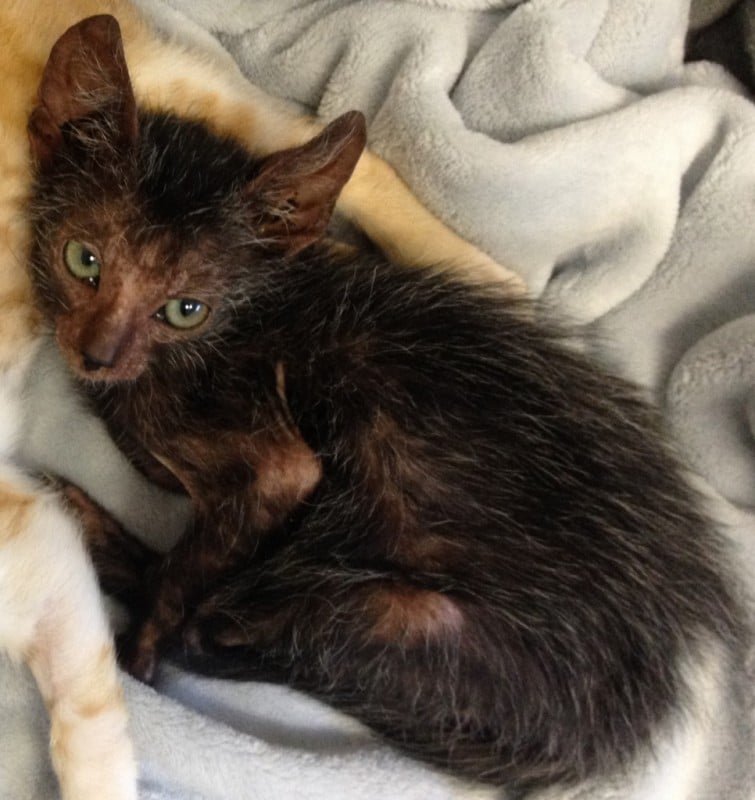
You may’ve heard of “Lykoi” cats or maybe you haven’t. They’re sometimes called ‘wolf’ cats or even ‘werewolf’ kitties and there have been a few articles about them since the breed became recognized a few years ago. To be accurate, they aren’t really a breed, they are cats with a naturally occurring genetic mutation that began appearing in feral cat populations worldwide in the last two decades.
Cats with ‘Lykoi’ traits have been recorded in the Americas, Europe, Australia, and even South Africa. Since 2011 (when monitoring of these cats began,) there have been over thirty recognized mutations worldwide. These kitties vary widely in their fur patterns ranging from almost completely black to gray to white to almost furless. But all of them share dog-like traits (including extreme loyalty to their family and being very scent-motivated,) large ears (usually furless or furless on the back,) and a charming little ‘wolf-like’ face. They are highly intelligent and inquisitive. They also ‘molt’ periodically, losing patches of their fur.
Some Lykoi are born full-coated but may lose hair as they grow older, giving them a patchy look. Others are born with little fur and a few are fully coated. If you visit sites featuring Lykoi cats and kittens, you’ll see a wide variety of fur patterns and fur to furless coats.
When these kitties first began appearing online many folks believed they were a cross between Sphynx and Devon Rex cats. But testing has proven not only that they are a natural mutation, but that despite their hair loss that they are completely healthy. Many vets are still unaware of this new variation of cats. My own vet wanted to test my new kitten for a fungal infection when she noticed the backs of her ears were hair-free.
The word, Lykoi, means ‘wolves’ in Greek and was coined by Dr. Johnny Gobble, the veterinarian who first discovered these unique kitties and who, with his wife, Brittney, has been working to spread awareness about them. Gobble found his first pair of Lykoi in Virginia where he writes that the cats are occasionally spotted in people’s backyards.
Although there are now breeders specializing in Lykoi cats and the International Cat Association added Lykoi to the cat registry of recognized breeds in 2011, you don’t have to go to a breeder to find a Lykoi kitty. They show up from time to time in shelters and in feral cat colonies. My own kitten was a feral who lost his mother and siblings and who ended up in a high-kill shelter, but was saved at the last minute by Nashville Cat Rescue.
I’ve also noted a cat with Lykoi traits (gray and white pattern) who has visited the feral cat colony I care for throughout the summer. He’s a large cat with a loping gait who could be mistaken for a small dog or bob cat from a distance. When I first saw him up close and noticed his furless ears and ‘thinning fur,’ I worried he could be ill. But, as it turns out, he’s very healthy and, hopefully, will be caught, neutered, and rehomed as a barn cat in the near future.
If you’re interested in Lykoi cats, you can find out quite a bit about them with a simple online search. If you work with feral cats or volunteer at a shelter, be on the lookout for them, and, should you spot a Lykoi, please reach out to a local Lykoi breeder to see if they can provide a home. Many shelters and even some veterinarians aren’t aware of this mutation. So let’s do what we can to get the word out that these little “werewolves” are friendly and healthy and looking for fur-ever homes.




